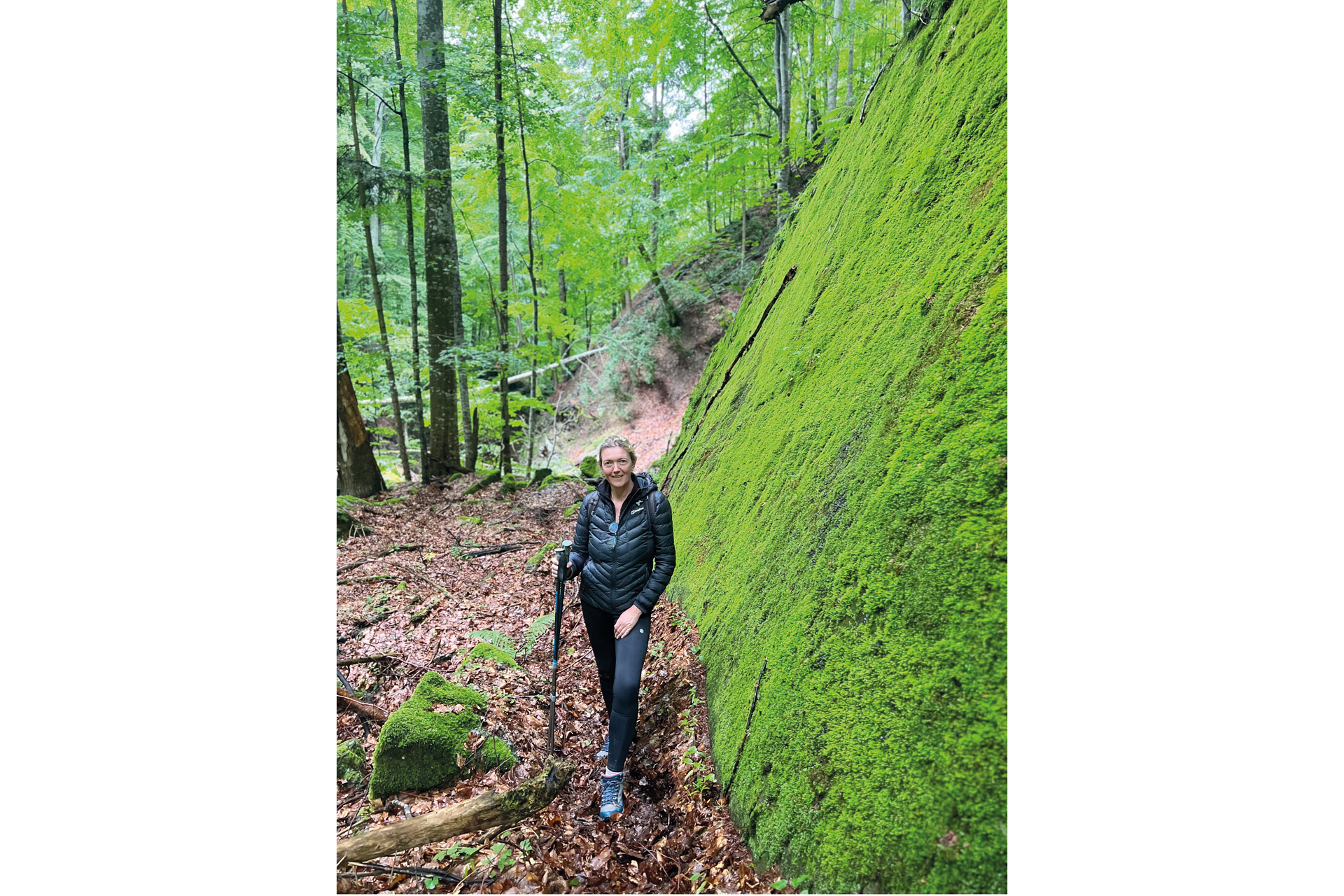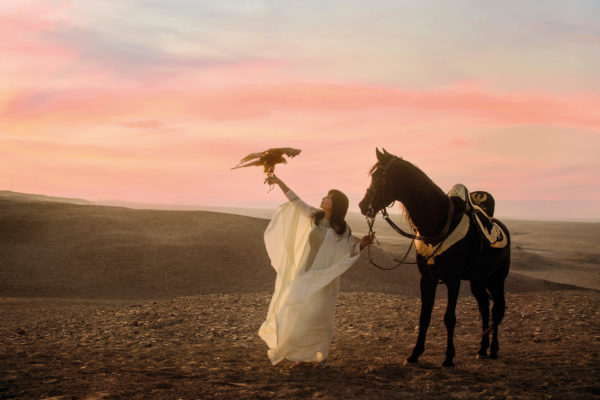Conservation & Controversy In Romania’s Carpathian Mountains
By
1 year ago
The region is grappling to become a national park

Conserving swathes of Europe’s very own ‘Yellowstone’, in Romania’s Carpathian Mountains, is the mission of biologists Christophe and Barbara Promberger, but it’s not all plain-sailing, discovers Annabel Heseltine.
Read the C&TH Guide to Responsible Tourism
Conserving Romania’s Carpathian Mountains
High up on the open pastures of Transylvania, I am dining by candlelight with 13 strangers under an oak tree old enough to have witnessed Genghis Khan’s hordes. But this evening, as we tuck into our barbecued steaks everything feels more benign. In the gloaming, sheepdogs guard grey cattle snatching at wildflower stems. A swollen- bellied mare wanders up to gaze at us, a foal snug to her shank. She tosses her black mane and passes on. There are no fences, no hedges, no wire to still her or the shiver of silvery grasses flying in the gentle wind towards the far-off Făgăraș mountains because, in this part of the Southern Carpathians, there are no boundaries to tame the wildness. Superficially, it’s a bucolic idyll fluttering with butterflies, but the façade is flawed.

Annabel laces up her hiking boots for a wilderness adventure in Romania
‘There are no young oaks. These ancient Saxon pastures have lost 300 years of growth because of over-grazing. It’s not just the trees but the beetles, insects and lichens which are threatened,’ explains Sir Charles Burrell, owner of Knepp, Britain’s pioneering wilding project, on a dewy walk the next morning led by a whiffy mountain man with the rare talent of being able to imitate 140 different bird calls. Charlie is the chair of Foundation Conservation Carpathia, which was established by our hosts, biologists Christophe and Barbara Promberger, to protect a staggering 300,000 hectares of wilderness teeming with bears, lynx and the biggest population of wolves in Europe, by turning it into a national park. It’s the ‘Yellowstone of Europe’ says his wife, the author Isabella Tree.
Not everyone sees it that way. The local communities, mainly poor subsistence farmers are, understandably, suspicious. Historically, national parks in Romania have been restrictive, preventing residents from changing their homes, building hay barns or taking wood. ‘Nobody understands how it could improve the local economy,’ said Christophe, who has poured money into an extraordinarily complex plan to show them reintroducing wildlife, and creating food hubs for local producers, jobs, education and tourism. That’s where we come in.
Downing tools twice a year, the Prombergers team up with a travel company, Journeys With Purpose, created by conservationist Duncan Grossart to support landscape-scale nature restoration projects. ‘We connect people with ambition for change with the pioneers on the ground,’ explained JWC Director Venetia Martin, revealing that 20 percent of each person’s £9,000 fee is diverted into a specific project. Already two visitor information centres are under construction, showcasing the recent beaver and bison reintroduction programmes. Vultures are next on the list.
It is a kind of ‘money-can’t-buy’ experience that usually sells for tens of thousands at London and New York charity galas. Included in our carefully vetted group are an Oxford scientist running an NGO in Mali, an award-winning environmental financier, a couple of farmers with wilderness projects in Portugal and England, a trauma therapist and an organic muffin man who’s also heir to a parcel of Texas.

Careful conservation measures are turning the Carpathian Mountains into the ‘Yellowstone of Europe’
First up was a horse-drawn cart ride across the Promberger’s Cobor biodiversity farm to meet some bouncy Carpathian sheepdog puppies reared to help mitigate human- wildlife conflict. Once trained they will be given to shepherds practising traditional grazing methods, to keep predators at bay. Cattle are bred to replace animals taken by wolves or bears. ‘Financial compensation isn’t good enough,’ says Christophe. ‘Money replaces animals but not the milk or cheese they produce.’
That night we walked silently under damp beech trees until we reached the safety of a hide from where we watched seven bears clambering over logs and snuffling through deep humus. Trips like these are not for the faint-hearted.
Over the next five days we hiked in virgin forests, learnt about wildlife monitoring and reintroductions, camera traps, foraging, organic farming, all the while feasting on local wines and gourmet meals. After abseiling through the forest, an event on the way home highlighted the socio-economic problem. Our guide was leaning over an old lady in black with woollen socks lying on the ground. We thought she had had an accident, but she was drunk. Barbara was visibly upset. ‘It’s the poverty and misery,’ says Christophe. And a salutary reminder of what the biggest national park in Europe could really mean for the local Romanians with the additional income from hotels, restaurants and holiday activities like camping.
The Prombergers had promised us glamping at an abandoned shepherds’ camp. But nothing prepared us for what lay ahead: 20 tepees laid out on an alpine meadow overlooking the forested Făgăraș mountains, and a bison herd that joined us at dinner, staring through a providential electric fence. A helicopter trip sparked debate about the ethics of environmentalists spewing carbon.
© Calin Serban
Christophe was relentless. ‘It’s only possible to see the scale of this from the sky,’ he shouted over the engines as we flew past granite escarpments thousands of metres high, looking down on alpine meadows carpeted with purple rhododendrons, deep reservoirs, a sole climber on a peak, and valley after green valley. His motives are rigidly disciplined – he recently turned down a lucrative offer from a travel agent willing to spend six figures helicoptering his clients between camps. But he’s on a mission. To achieve the national park, he needs the support of all 28 local communes, and time is not on his side.
Sixteen years ago, the Austrian-Bavarian couple, who met here while studying big carnivores, stumbled across a side-cutting of illegal logging, slashed and burned, while out hiking. The sight confirmed the couple’s worst fears: ‘the forests were fast disappearing, and with that, wildlife habitat,’ said Christophe. According to Interpol, 30 percent of globally traded timber comes from illegal sources, and over half of it is sourced in Romania. Without the protection of a registered national park, the virgin forests are rich pickings for a thriving black market. ‘A Romanian boxing champion once showed up on our doorstep to show that they knew where we lived,’ revealed Barbara. Together, they conceived the idea of buying the land until the government could afford to protect it as a national park. Then they would hand it over.

Venetia Martin of Journeys with Purpose
Funded by private donors – including Swiss billionaire Hansjorg Wyss who has donated over two billion dollars, Wolfskin and MFI heir Paul Lister’s The European Nature Trust, TENT, and EU funds – they embarked on a shopping spree, buying land, hunting rights, planting 4.5million trees, repairing 1,500 hectares including 50kms of tracks forged by the logging trucks. But 27,000 hectares later they ran into a problem. Not all the land was for sale. Much of it was government or community owned, and they needed the people on side.
‘If people like the conservation idea then it becomes sustainable. If they don’t, it goes nowhere,’ said Christophe. If the local mayors supported the idea of a national park then the government would have to agree but while their electorate were suspicious they weren’t interested. Hence began one of the most audacious PR jobs ever conceived. They also took the mayors to see other national parks where locals were prospering and brought in carbon credit schemes to satisfy the pockets of wealthier landowners who would lose income from selling logging rights.
Today, FCC is channelling approximately 20 million euros a year into the Southern Carpathian economy and eight mayors are on board; they believe they can bring them all on side within five years. Meantime, they’ve identified ten other smaller areas needing park protection – it should be easier as FCC’s fame spreads.

The expedition glamped in a clover-strewn meadow
On our last day, the Prombergers took us up a bone-rattling track. We clambered over boulders, balancing on tree trunks across swollen streams to see a 300-hectare side-cutting which had inspired their vision so long ago. That perpetrator is now in prison – small consolation when we learned it cost FCC two million euros to reforest with saplings, borne by donkeys. But there’s light at the end of the forest. Promberger recalled how, recently, they had stopped to help some strangers from Bucharest, lost at the crossroads. When they saw the FCC sticker on his car, they shouted after him. ‘YOU are Carpathia. We love Carpathia.’ And with that memory the Bavarian’s face lit up. The recognition has been a long time coming.
BOOK IT
Annabel travelled with Journeys with Purpose. The next trip to Romania takes place from 15–23 June 2024 from £7,800 per person including a 20 percent donation to FCC. journeyswithpurpose.org
Annabel’s return trains had a carbon footprint of approx. 86kg of CO2e. ecollectivecarbon.com







